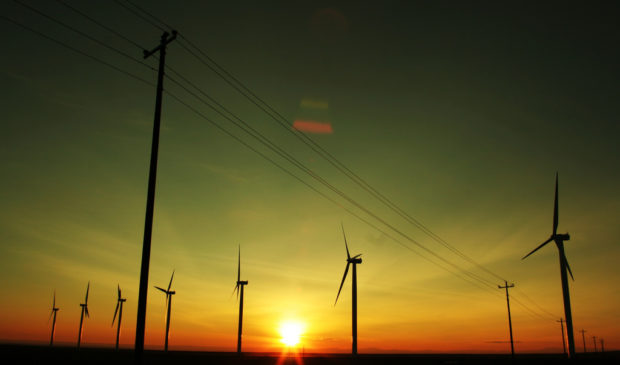Task force to update Austin Energy’s environmental plans
Tuesday, November 8, 2016 by
Jack Craver Austin Energy is gearing up for another update to the “Austin Energy Resource, Generation and Climate Protection Plan to 2025,” the document first approved by City Council in 2007 that outlines how the city-owned utility intends to change in the coming years to reduce pollution and greenhouse emissions while delivering affordable and reliable electricity to city ratepayers.
Among other goals, the current plan, which was last updated in 2014, sets a goal for the utility to derive 55 percent of its energy from renewable sources by 2025 and keep electricity rates from rising more than 2 percent per year.
The Electric Utility Commission voted unanimously last week to approve a working group, made up of 16 volunteers, that will make recommendations to Council on what changes need to be made to the existing resource plan.
The working group will be composed of 16 members representing different constituencies. In addition to the eight members drawn from the Electric Utility Commission and the Resource Management Commission, there will be two members who represent large commercial customers as well as a handful of advocates for the environment, low-income customers and small businesses.
Betty Dunkerley, a consultant for the Seton Healthcare Family, will be representing hospitals as well as large industrial companies that belong to the Coalition for Clean, Affordable and Reliable Energy (known as CCARE), an advocacy group made up of businesses and nonprofits.
“We have an overarching interest in affordability for everybody, but representing the hospitals, we also care about a clean environment that leads to a healthy community,” she said. “So we want to see these things balanced.”
Khalil Shalabi, vice president of energy market operations and resource planning for Austin Energy, will represent the utility during the work group’s meetings.
Asked what he hopes to accomplish in crafting the next update to the resource plan, Shalabi declined to suggest specific goals but said that the new plan should be amended to account for the changes in the energy market over the past two years, most notably the dramatic drop in the price of natural gas. He would also like to assess a number of different paths the utility could pursue in terms of energy use.
“I’d like to stretch out the scenarios we look at,” he said. “Looking at what it would cost to go 100 percent renewable; what it would cost to have a large storage device in our portfolio; what it would cost to replace Decker (Creek Power Station) with various resources, including gas; what is the impact of local solar power in Austin?
“I’d like to do those kinds of diverse studies,” he added.
Both Shalabi and EUC Commissioner Michael Osborne, who led the previous task force and will serve on it again, suggested that the upcoming update to the plan will not entail major changes.
Commissioner Mary Katherine Stout suggested that the makeup of the working group is not as diverse as it should be – that it mostly consists of the individuals and groups that are familiar names at commission meetings. If the commission picked 15 random people from Austin who are not engaged in energy advocacy, she said, “You might get a little more diversity of opinion.”
Osborne pushed back, pointing out that 14 of the group members hadn’t been a part of the group formed to update the resource plan two years ago.
Stout maintained, however, that it was “many of the same voices … that are engaged in these things generally.”
EUC Chair Karen Hadden said that Stout’s point was “very, very valid” and that she also hoped to get “new voices” attending EUC meetings and engaging with issues relating to Austin Energy.
Conversely, Commissioner Carol Biedrzycki was delighted to discover that another volunteer serving on the working group, Carlos Castanada, is a renter, rather than a homeowner.
“People like me like to hear that,” said Biedrzycki, who believes that tenants are underrepresented in discussions of electricity rates.
While there is no strict timeline for completing the new plan, Shalabi said he anticipated a time frame of about four or five months.
Photo by Chrishna made available through a Creative Commons license.
The Austin Monitor’s work is made possible by donations from the community. Though our reporting covers donors from time to time, we are careful to keep business and editorial efforts separate while maintaining transparency. A complete list of donors is available here, and our code of ethics is explained here.
You're a community leader
And we’re honored you look to us for serious, in-depth news. You know a strong community needs local and dedicated watchdog reporting. We’re here for you and that won’t change. Now will you take the powerful next step and support our nonprofit news organization?








